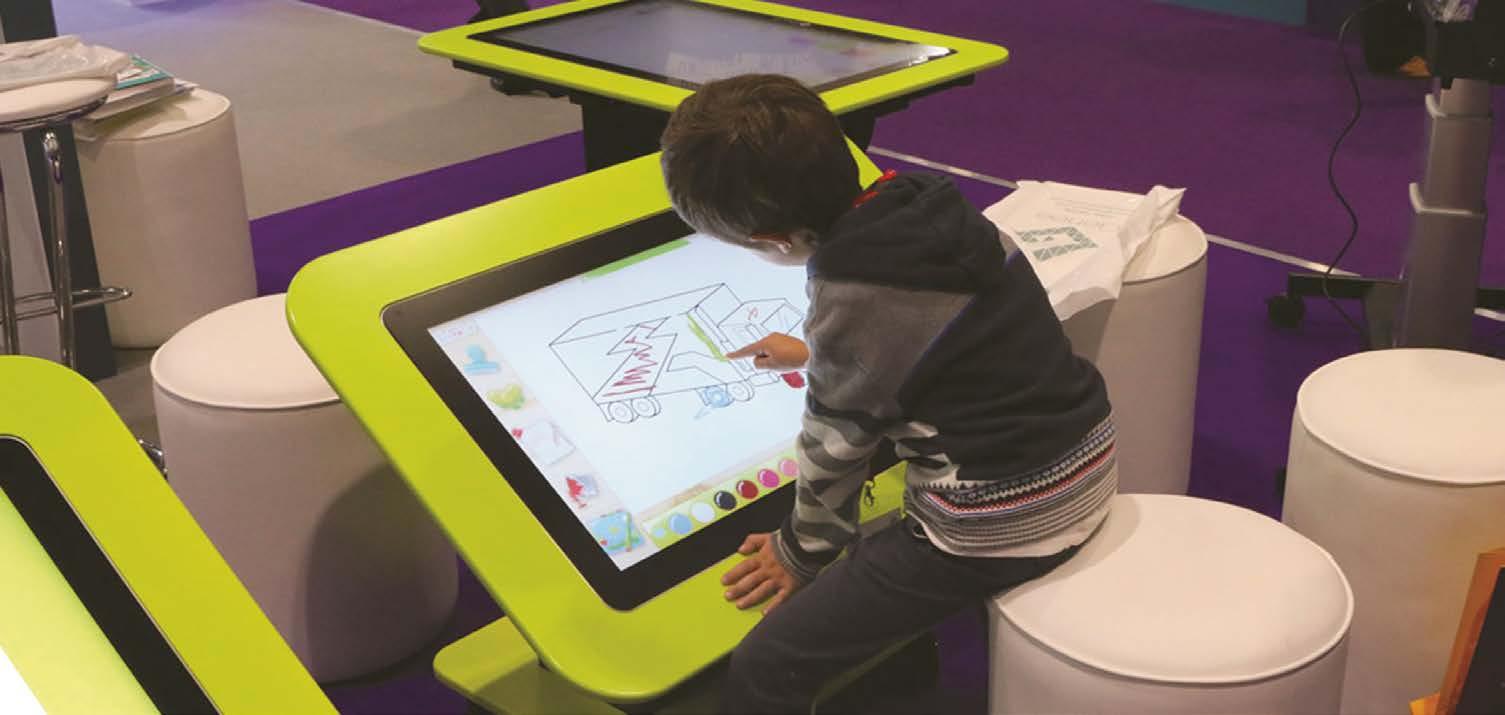
2 minute read
EARLY YEARS PRACTITIONERS ARE TURNING THE TABLES ON ICT USE

Nursery pupils are at a crucial time in their lives, where hands-on exploration of their surroundings to build physical skills is just as important as mental exploration and imagination are to communication skills. The challenge for early years practitioners is that children develop at different rates in different areas to their peers, so how can they best encourage collaboration in a way that reflects everyone’s needs?
Advertisement
The learning environment in a nursery is usually a mixed bag full of toys, stationery and dressing up. And while play is a key feature of a child’s development, technology also has a crucial role in helping them to understand how to work as a team, understand roles and responsibilities and engage with learning; building a solid foundation between nursery and primary school. Here, Carl Sheen, former teacher and head of training and development at Genee World, looks at how technology can help build skills among pre-schoolers…
Heads of nurseries are already aware of the impact technology can have, with many turning to the Early Years Pupil Premium scheme to purchase the latest in edtech for nursery and primary schools. Technology is perfectly positioned to tap into the natural curiosity of young children, providing platforms for them to express their ideas without limitations. The different educational games available are endless, meaning there’s something for everyone. There is also research from the Literacy Trust that indicates the role of technology in supporting reading growth; when used correctly, edtech provides a route into reading for all children, particularly those from disadvantaged backgrounds. Interactive technology, such as whiteboards and touch tables, bring lessons to life by putting them into perspective or giving a visual representation of the learning topic.
For example, many touch tables come with software that has pre-loaded education games. Learning through play is a popular debate within the education sector, but especially for pre-schoolers, having the option to learn through creative and hands-on techniques really supports their storytelling and problem-solving skills. Each activity can be selected for a personalised learning pathway for each pupil based on ability or any additional needs they may have. This is why touch tables in particular have proven to be a popular choice for supporting children with special educational needs and disabilities (SEND). Nurseries are full of children at different developmental stages of communication, so using technology to connect them and support collaborative learning across abilities is a subtle but effective way of promoting social skills and technology skills at the same time.
An example of how to do this would be to use technology when teaching nursery rhymes. Using touch tables with selected software applications, letter formation, differentiating between sounds and early handwriting skills can be developed right alongside learning their favourite songs. On the teacher’s screen, children could see images associated to the nursery rhyme and follow along on either their own devices or in small groups to match the word with the image, either by selecting one pre-written or writing it themselves, depending on ability.
Touch tables also work with classrooms of different sizes to ensure collaboration is efficient across all groups. Many are now moveable and can be height adjusted, whether it’s for a child sitting down for independent play and learning, or in the middle of a small group working together on an activity. To maintain safety they can be locked into place, too. This also makes it flexible for wheelchair users, making the technology inclusive for all pupils’ needs.
Introducing technology in a pre-school setting can have a significant impact on a child’s adjustment between nursery and primary school, preparing their communication and social skills for personal development, but also support skills for academic progress. If they are taught how to work together at an early age, this equips them with a strong foundation to see them right through their education and into their adult life.
See geneeworld.com for more information on interactive displays in the classroom.










